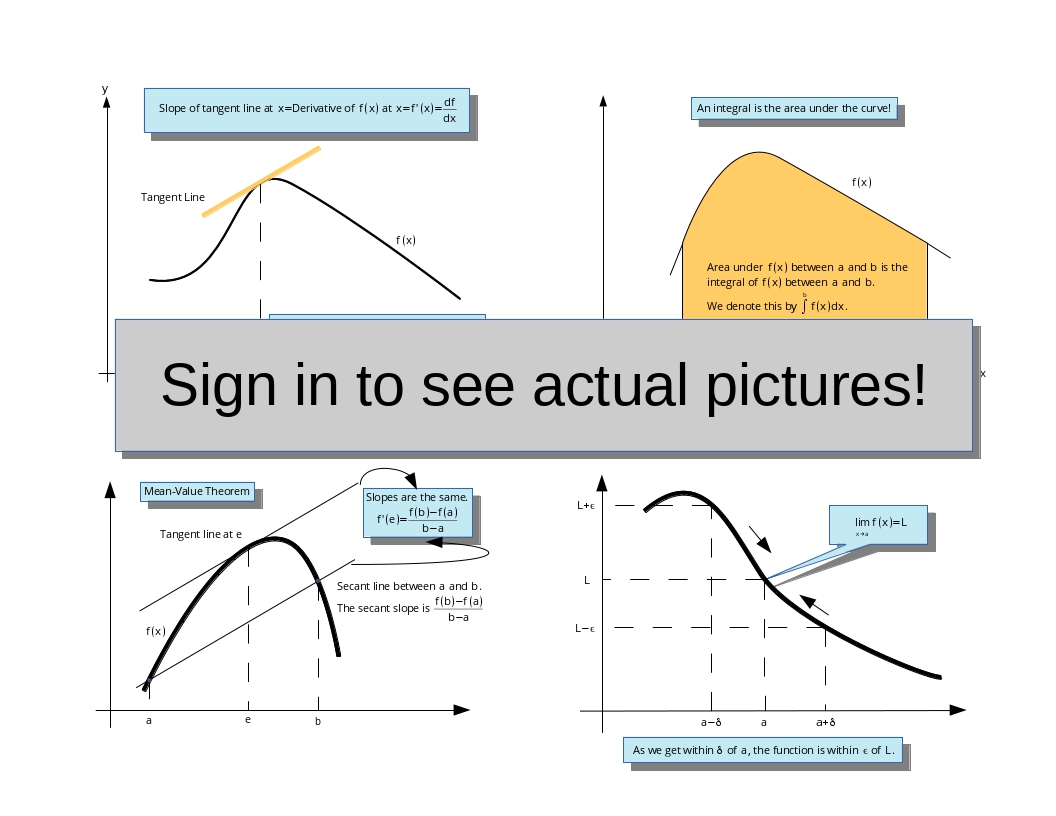Function Composition
Primary tabs
SAMPLE LESSON
Sign in for easy to read lessons narrowly focused on a specific subject. All lessons are linked to each other allowing you to easily see the connections between different Calculus concepts. Our unique Calcmap will give you a bird's-eye view of all our lessons and help you see how important concepts are related to each other. All of the formulas are available to our subscribers, but here is a sample of the lesson you will see when you log in:
What happens when something depends on something which depends on something else? How do we describe that mathematically? For example, the primary source of food for blue whales is krill. Krill are a part of a complex ecosystem that depends upon phytoplankton for their food source and the availability of them near the Antarctic. In particular, the sea ice around Antarctica has been shown to be an important factor in driving krill populations as the sea ice produces a natural shelter from predators and helps capture plankton that krill feed off of during the winter months. When spring comes the release of plankton into the ocean combined with constant sun light allows krill populations to feed and expand during the summer months when whales and other animals will come to eat. However, as sea temperatures have risen the sea ice has declined and krill populations in some areas have dropped dramatically. As such, the amount of krill available to blue whales is dependent upon sea temperature.
Let's assume that scientist have discovered that the blue whale population is dependent upon the krill population by the formula
<Sign in to see all the formulas>
where B is the number of blue whales and k is the number of pounds of krill in billions. So for example 500 billion pounds of krill sustains
<Sign in to see all the formulas>
blue whales. Let's also assume that scientist have found that the krill population is dependent upon the temperature of the water by the formula
<Sign in to see all the formulas>
where k is the number of pounds of krill in billions and T is the temperature of the water in degrees celsius. For example, at T=0 the krill population is <Sign in to see all the formulas> which means 507,125,000,000 pounds of krill. (Please note that the biology is real, but the formulas do not represent real research and are made up to demonstrate function composition.)
So how do we determine the blue whale population as a function of sea temperature? To some it may seem obvious that where ever we see k in B(k) we should just put in the formula for k(T) like so:
<Sign in to see all the formulas>
Doing this is absolutely correct! This is called function composition and we denote it by <Sign in to see all the formulas> or <Sign in to see all the formulas>. See the picture below.

Now let's be more formal and state what a function composition is. Function composition is applying the results of one function to another function. Given two functions f(x) and g(x) and assuming that the range of g(x) is in the domain of f(x), then the composition <Sign in to see all the formulas> is the function
<Sign in to see all the formulas>
whose domain is the domain of g(x). In practice, the function <Sign in to see all the formulas> is obtained by first placing g in for every value of x in f(x) to obtain f(g) and then by placing the formula for g(x) into every value of g in f(g). In general, <Sign in to see all the formulas>. Here is an example.
Finally, <Sign in to see all the formulas> is read as "f circle g", "f of g", "f composed with g", or "f following g".
